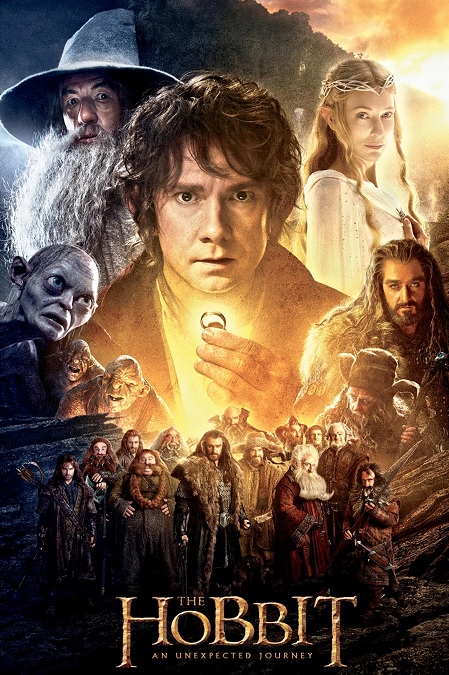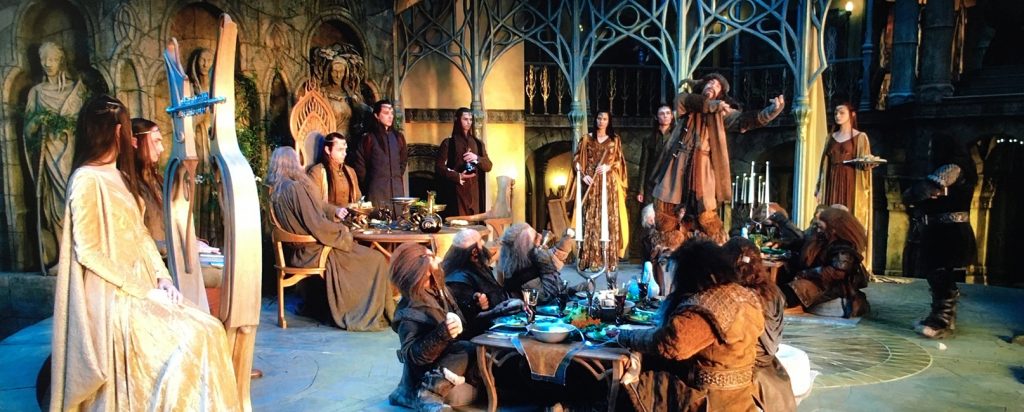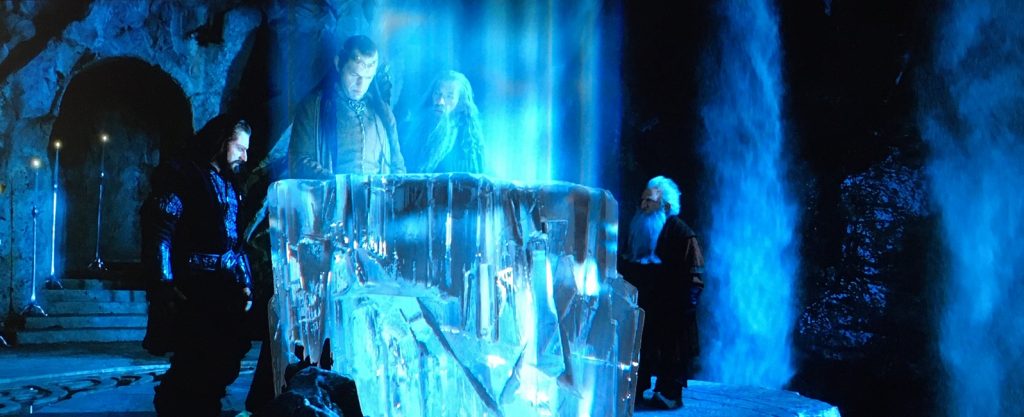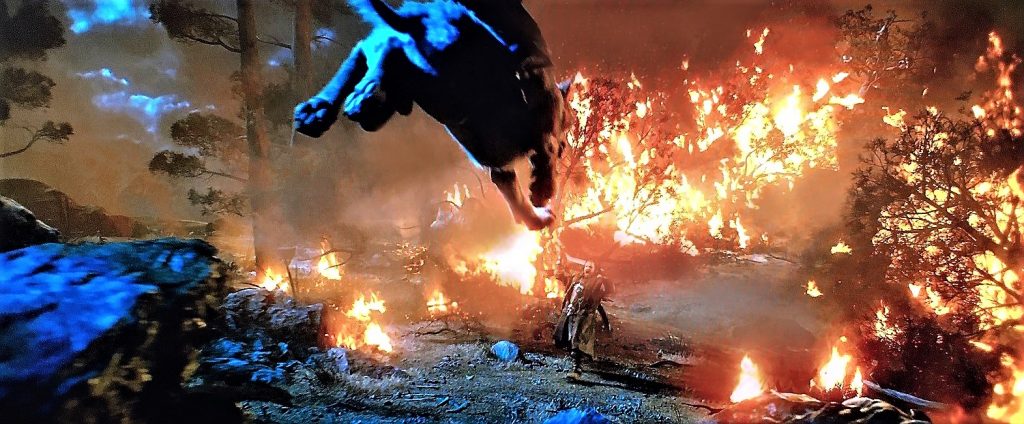



The Hobbit: An Unexpected Journey – 2012

Well, Peter Jackson does it again. And he found new ways to solve old problems, so that just adds another layer of awesome to his visual effects for the first of the three Hobbit movies. I call that pretty impressive. A lot of people say that the one small book that this film is based on was barely enough to fill two movies, and that making three was just a cash grab, but I don’t care. It gave me more awesome visual effects to see, and a broader, richer story.
I’ll start off with one of the most important effects in the movie, that of the size difference between the various characters. It was an issue that had to be address throughout the entire film, from beginning to end, and they never dropped the ball. The dwarves of Thorin’s company were the main cast, but the were constantly sharing the screen with the tall Gandalf, elves, trolls, giants and goblins.
In the original Lord of the Rings trilogy, Jackson was able to get away with forced perspective to film actors on the same set, at the same time, to achieve the illusion of size difference between characters. And that worked when there were only a few actors on the screen. But here, the 13 dwarves are rarely seen apart from each other, along with taller characters. The filmmakers’ solution was to develop a camera system that used two cameras. The first filmed the dwarves. The second camera was linked to the first so that they moved in exact synchronization. The taller characters were filmed on a miniaturized green-screen set, with the camera being closer to the actors, making them appear large in the frame. They had earpieces that allowed them to hear the other actors. When the two images are composited together, they look like they are different sizes. A genius solution!
But there were also plenty of CGI characters that were incredibly photo-realistic, both in how they looked, and how they moved. It was all pretty-much flawless. The best example of this was the main bad guy, Azog, the albino Orc. He was incredibly done, and though there was an actor playing him, he was most certainly enhanced by digital means. And even though the goblins in Goblintown had a core group of live actors, it was decided that most, if not all of them, were covered by CGI goblins. It was too bad, because the actors were fitted with great animatronic face masks that looked fantastic. Unfortunately they were too hot for the actors to wear for any extended period of time.
Also, the movie was filmed using a higher frame-rate, giving the images on the screen a vastly sharper image. I remember seeing this movie in the theatre, and the difference in the image was easily noticeable. It looked like the actors were actually real, maybe standing on a stage at the front of the theatre. It was really amazing! The problem was that it didn’t really enhance the movie-watching experience for me, at least not enough to make it worth their efforts. I enjoy the movie, and am equally engrossed in the story when the frame rate is normal. The enhanced picture quality seemed to be a novelty that was mostly unnecessary.